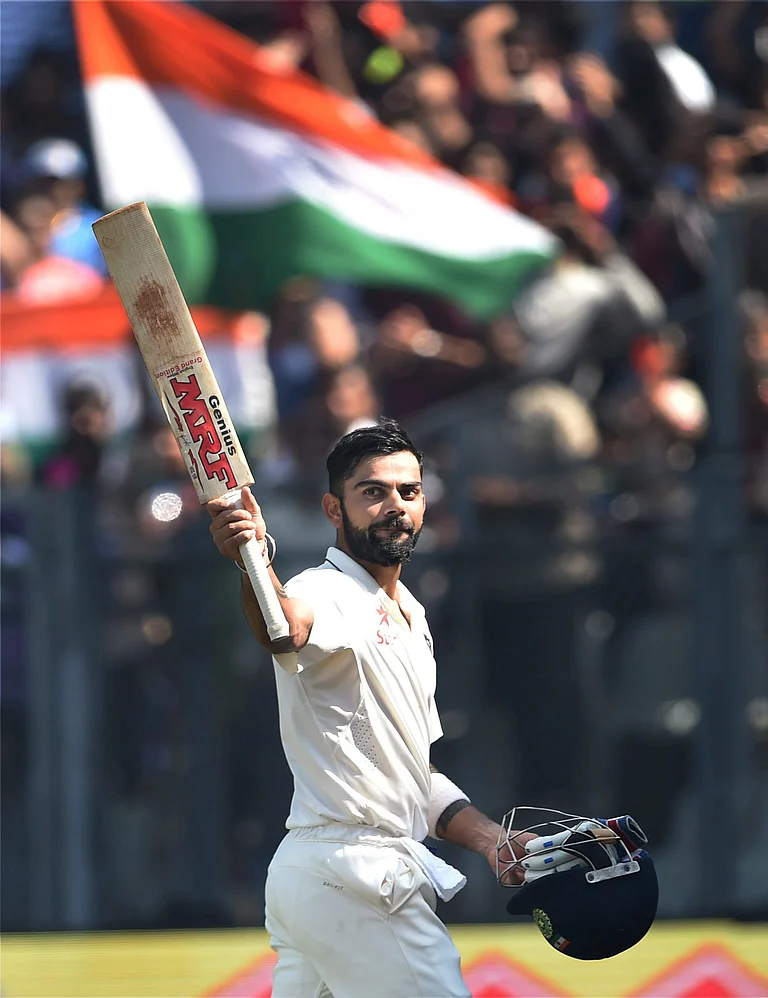The first history of cricket, The Cricket Field by the Rev. James Pycroft, appeared in 1851. It reinforced the image of the game as a moral force. The construct that it was “more than a game” was established early. Later histories (all Anglo-centric), created the mythology of the sport’s progression from rustic innocence to a golden age followed inevitably by decline.
Test cricket has had to live down its conservatism and its perceived image as being slow to change. Yet, Tests have gone from being played by two sides to 12; matches from three, four, five days (and even been ‘timeless’); overs have been of four, five, six, eight balls, bowled underarm, overarm with red or pink ball over day or night. In England, where it began, the game was reputed to be a reflection of society; in India, now the nerve centre, it might well be that society is a reflection of its cricket.
There was, of course, no rustic innocence, and no one can argue today that cricket as a sport is in decline. Cricket began as a vessel for gambling– the first rules were formulated to regulate this–and the innocence was imposed by later writers who tended to see glory in the past, decay in the present and demise in the future. Neville Cardus is a good example of such a writer. Derek Birley, the English social historian, called Cardus “a blatant purveyor of debased romantic imagery…capable of shameless if somewhat skillful assemblages of emotive language.” Cardus might have elevated cricket writing to literature, but he did it at the cost of ignoring its larger truths.
Tim Wigmore’s Test Cricket: A History avoids the biases and false romanticism of past histories. It eschews the elegiac tone or the assumed gravitas that afflicts many accounts. Solemnity is replaced by a lightness of touch. The unsavoury aspects–apartheid, match-fixing, chucking, cheating–are not overlooked. This is an unsentimental account written by a journalist (Wigmore is a cricket writer of the Daily Telegraph) with a fine sense of history. It doesn’t need to get into either the rustic days, or the chest-beating for the future. There is a novel perspective on the golden age. Generally believed to be the period from 1890 to 1914, it saw in action W.G. Grace, Ranjitsinhji, S.F. Barnes, Victor Trumper and Gilbert Jessop. Yet, says Wigmore, it ranks among the worst periods in Test history for batting (statistics supplied). In 1911, Wisden concluded that first-class cricket was losing its hold on the public.
But it’s not the figures alone. The nostalgia ignores the realities: in the 172 Tests played till 1928, only three players were not white. “The Golden Age,” writes Wigmore, “was cricket’s great missed opportunity.” Nations outside the British empire–Argentina and the US which played the game–were ignored, as administrators prioritised the ‘Imperial’ over the ‘Cricket’ in the ICC (then known as the Imperial Cricket Conference). The chance to develop a bigger and more geographically diverse game was lost.
The so-called Englishness of cricket probably cost the West Indies too. From their first Test in 1928, until Frank Worrell became their first black captain in 1960, non-whites in the top seven had an average of 42.15 while whites averaged just 28.04. By backing everything he says with statistics, Wigmore brings a special flavour to this unique history.
History influences the present, but perhaps the reverse is also true. From the 21st century and the rise of India as the superpower in the game, it is possible to rearrange the past knowing what was significant and what merely incidental. The Anglo-centric approach was of its time. Cricket’s ethical superiority was in English minds a sign of their racial superiority. Now that the centre of the international game has shifted to India, it is possible to ignore or accentuate events of the past and understand them better. This is the understanding Wigmore brings to the narrative. The wheel turns, as England failed to realise then, and India haven’t yet realised today.
As Ashis Nandy put it in the 1980s, cricket is an Indian game accidentally discovered by the English. In the next century, it might be possible to read that an Indian batting line-up of Virender Sehwag, Rahul Dravid, Sachin Tendulkar, V.V.S. Laxman and Sourav Ganguly initiated the golden age!
When I was seven or eight, a cricket-mad uncle subscribed to Sport and Pastime magazine which was then serialising Ten Great Bowlers by Ralph Barker. The first quote in the game I knew was “This thing can be done”, the Australian fast bowler Fred Spofforth’s belief that he could bowl England out for under the 85 they needed for a win. He kept saying it through the innings. Repeated for dramatic effect, perhaps, but he did it. England were bowled out for 77, Spofforth taking seven for 49, and the legend of the Ashes was born.
Wigmore begins with the birth of the Ashes and handles the narrative arc with the comfort of knowing where he is headed. Bazball, England’s current approach of positive cricket regardless of result, gives him a chance to remind us that nearly 150 years after Test cricket was created, teams are still finding new ways in which to play it. Every chapter begins with a story specific to the start of Test cricket in that country or a unique issue (Bodyline, the D’Oliveira affair, shooting in Pakistan, the birth of reverse swing or the doosra) and uses that as the base to explore related matters.
There is a smoothness to it all that makes for an enjoyable read for both the newbie and the veteran. The research does not dominate; the anecdotes are important. The latter, like good supporting actors, do not draw attention to themselves, but add immeasurably to the pleasure.
Test Cricket: A History is a modern book in that it steers clear of cant and sanctimony, thus infusing the narrative with a freshness that brings alive the best and worst of the great game.
















